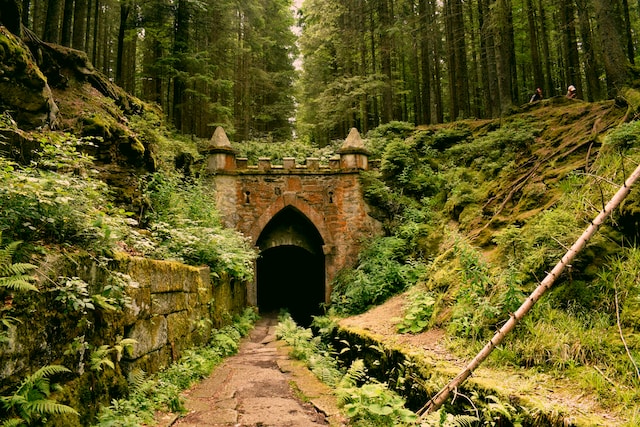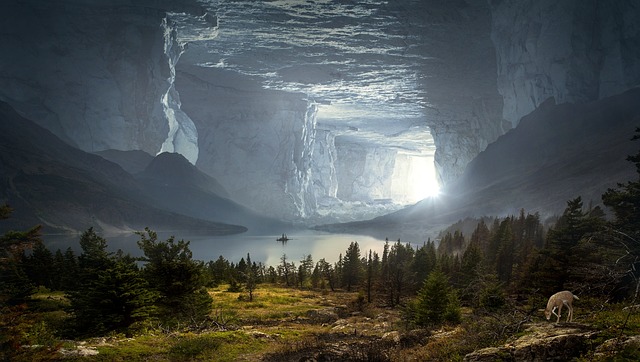
The power to create entire universes rests in the hands of a writer—an architect of dreams, whose words mold and shape ethereal landscapes rich with hidden treasures, ancient ruins, and mythical creatures. These worlds become a playground for the extraordinary, where ordinary rules crumble under the weight of fantastical possibilities.
But what lies at the heart of crafting such captivating realms in fantasy writing?
How does a writer transmute mere words into enchantments that transport readers to faraway lands? At the core, it is the delicate dance between imagination and craftsmanship that allows for the emergence of magical worlds
World-building is an intricate tapestry that interweaves various elements—from geography, history, and culture to the nuanced interplay of politics, religions, and customs. The alchemy lies in finding the perfect balance between vivid description and unspoken mystery—a tapestry where the reader is both observer and participant, forever yearning to peel back the layers of a fantastical reality.
The Fundamentals of World-Building
World-building in fantasy writing begins with the fundamentals of creating a rich and immersive setting. These key elements form the foundation of a believable and captivating fictional world.
Geography, Landscapes, and Climate
The geography of your world influences the types of environments your characters will encounter. Mountains, forests, deserts, and oceans create diverse backdrops. Consider the climate and how it affects the land and its inhabitants. A world with different weather patterns can add depth to the setting.
Flora and Fauna
Populate your world with unique plant and animal life. Think about how these creatures fit into the ecosystem. Fantasy worlds often feature mythical or magical creatures, adding wonder and danger to the setting.
Races and Civilizations
Create different races or species, each with its own characteristics, abilities, and cultures. These races may include humans, elves, dwarves, or entirely original creations. Develop civilizations or nations, each with its own history, values, and customs. These societies may be peaceful or embroiled in conflicts.
Social Structures and Customs
Consider the social hierarchies within your world. Are there kings and queens, rulers or councils, or a completely different power structure? Explore the customs, rituals, and traditions of these societies. They shape the behavior of your characters.
Developing a Magical System
Types of Magic: Define the types of magic present in your world. Is it elemental, arcane, divine, or something entirely original? Determine who can use magic, how it is acquired or inherited, and its rules and limitations.
Rules and Limitations: Establish rules for your magical system. What can and can’t magic do? What are the consequences of using magic? Limitations on magic help maintain balance and create opportunities for conflict in the story.
Mythology and Legends
Develop a rich mythology with gods, legends, and creation stories. These myths can be a source of inspiration for characters and events. Legends from the past can add depth to your world, as characters may seek to uncover ancient truths or artifacts.

Historical Events
Shape your world’s history with significant events, wars, and revolutions. These events leave a lasting impact on the world’s current state. Explore the consequences of past actions, which may lead to conflicts or quests in your story.
Mastering the fundamentals of world-building is essential for creating a believable and immersive fantasy world. Crafting geography, cultures, magic systems, and rich histories, allows authors lay the groundwork for captivating storytelling. These elements form the basis upon which characters will interact and navigate the intricacies of your fantastical world, making the journey more engaging for readers.
World-Building Methods and Approaches
When it comes to world-building in fantasy writing, authors employ different methods and approaches to craft immersive and captivating settings.
Top-Down World-Building: In this approach, authors start with the big picture. They create the overarching elements of their world, such as the continents, major civilizations, and the central conflicts. After establishing this framework, authors then delve into the smaller details, developing cultures, characters, and localized settings.
Bottom-Up World-Building: Bottom-up world-building begins with the smaller details and expands outward. Authors may begin by designing individual characters, towns, or specific cultures. Over time, these smaller elements naturally connect and form the larger framework of the world.

Real-World Inspiration: Many authors draw inspiration from the real world when creating their fictional realms. They may base their settings on geographical features, cultures, or historical periods. This approach allows readers to connect with the world more easily as it carries echoes of the familiar.
Mythology and Legends: Authors often integrate elements of mythology, folklore, and legends into their world-building. These stories can serve as the foundation for the magical systems, gods, or even the history of the world. By incorporating elements from real-world mythology, authors add depth and resonance to their fictional worlds.
Thematic World-Building: Some authors focus on building their world around specific themes or concepts. These themes can range from nature and balance to technology and industry. Thematic world-building ensures that every aspect of the world, from its geography to its cultures, aligns with the chosen theme, creating a cohesive and thought-provoking narrative.
Iterative Approach: World-building is often an ongoing process that evolves as the story develops. Authors may revisit and refine their world as they write. This iterative approach allows the world to grow organically, adapting to the needs of the plot and characters.
Authors use a variety of methods and approaches to create the worlds that serve as the backdrop for their fantasy stories. Whether starting from the top down or bottom up, drawing inspiration from the real world or mythology, focusing on thematic elements, or embracing an iterative process, world-building is a dynamic and creative endeavor. Each approach brings its unique strengths to the craft of creating immersive and captivating fantasy settings.
Elements of World-Building
In the realm of world-building in fantasy writing, certain key elements play a central role in constructing rich and immersive fictional worlds. These elements add depth and authenticity to the setting, making it come alive for both authors and readers.
Geography and Cartography:
- Landscape and Terrain: The physical features of a fantasy world, such as mountains, rivers, forests, and deserts, shape the environment and influence the movement and interactions of characters.
- Maps and Cartography: Many authors create maps of their worlds to help visualize and describe the geography. Maps provide readers with a sense of the world’s layout and the locations significant to the story.
Languages and Linguistics:
- Constructed Languages: Some authors develop entirely new languages for their fantasy races or cultures. These constructed languages can add authenticity to the world and enhance character interactions.
- Dialects and Accents: Linguistic diversity can be portrayed through dialects and accents. Different regions or races may have unique ways of speaking, reflecting their cultural backgrounds.
Economy and Trade:

- Currency and Trade: Consider the economic systems within your world. What types of currency are used? How do trade and commerce function? Economic elements can play a crucial role in the story, affecting characters’ livelihoods and motivations.
Technology and Innovation:
- Technological Levels: Determine the level of technology in your world. Is it medieval, steampunk, or advanced with magical machinery? Technology shapes the way characters live and interact with their environment.
Conflict and Politics:
- Political Structures: Explore the political systems in your world, including monarchies, democracies, or tribal councils. Consider the power struggles and conflicts within these structures. Politics often drive the plot, as characters may become entangled in political disputes or seek to change the status quo.
Each of these elements contributes to the richness and authenticity of the world in fantasy writing. Carefully developing these elements can help authors create immersive settings that enhance the storytelling experience.
The Role of Characters in World-Building
In world-building for fantasy writing, characters play a vital role in bringing the setting to life. They are not merely inhabitants of the world; they are agents who interact with and reflect the nuances of the created environment, making it more vivid and relatable.
Exploration and Discovery
Characters are often the ones who explore and discover different aspects of the world. Through their eyes, readers can experience the wonder and mystery of the setting. As characters journey through the world, they uncover its secrets, lore, and hidden places, providing opportunities for exposition and world-building.
Cultural Immersion
Characters become a bridge for readers to immerse themselves in the cultures of the world. Through their interactions with various societies and races, readers gain insights into the customs, traditions, and values of these cultures.
How Characters Reflect the World’s Nuances
The origins and backgrounds of characters are often intertwined with the world’s history and lore. By revealing the characters’ pasts, authors can provide glimpses into the world’s rich tapestry.
Characters can be crafted to align with the thematic elements of the world. For example, if the world is focused on the struggle between good and evil, characters can embody these themes through their actions and decisions.
Character-Driven World-Building
Characters can drive changes in the world. Their decisions, actions, and relationships can influence the course of events and reshape the world’s political, social, or magical landscape.
Through the eyes of characters, readers emotionally connect with the world. Readers experience the world’s triumphs and tragedies, joy and sorrow, as they are intimately tied to the fates of the characters.
Characters serve as the lenses through which readers view and experience the world. They explore and uncover the world’s secrets, immerse readers in its cultures, and reflect its nuances.

Challenges and Ethical Considerations in World-Building
While world-building is an exciting aspect of fantasy writing, it comes with its set of challenges and ethical responsibilities that authors must navigate. These challenges involve avoiding stereotypes, balancing realism and escapism, and addressing ethical dilemmas thoughtfully.
Cultural Sensitivity:
Authors must approach the creation of cultures and races in their fantasy world with sensitivity. Borrowing elements from real-world cultures without deep understanding can lead to cultural appropriation.
Careful research and consultation with experts can help authors avoid offensive or harmful portrayals.
Stereotype Avoidance:
Stereotypes, which rely on broad, oversimplified generalizations, can lead to shallow and unoriginal world-building. Authors should strive to create nuanced and unique representations of their fantasy races and cultures.
It’s crucial to avoid falling back on clichés and to respect the diversity and complexity of the real world.
Realism vs. Escapism:
World-building requires a balance between realism and escapism. While realism adds authenticity to the world, escapism allows readers to experience the fantastical.
Striking this balance is essential. Too much realism might make the world feel mundane, while excessive escapism could disconnect readers.
Consistency and Plausibility:
Authors should ensure that the rules and elements of the world remain consistent. Even in a fantastical setting, there should be internal logic and believability.
Readers can better immerse themselves in a world that feels coherent and plausible within its context.

Moral and Ethical Questions:
Fantasy worlds often present characters with moral and ethical dilemmas that parallel real-world issues. Authors should handle these dilemmas with care and respect for the complexity of the topics.
By addressing these dilemmas thoughtfully, authors can engage readers in meaningful discussions and reflections.
Representation and Inclusivity:
Inclusivity is an ethical consideration in world-building. Authors should strive to represent a diverse range of identities, backgrounds, and experiences in their characters. Ensuring that readers from various backgrounds can see themselves reflected in the world fosters a sense of belonging and respect.
World-building in fantasy writing is a delicate and magical process that allows authors to create immersive and captivating realms. Crafting intricate settings, developing rich histories and cultures, and creating characters that breathe life into the world can help authors transport readers to extraordinary and unforgettable places. However, world-building also comes with its challenges and ethical responsibilities, such as avoiding stereotypes, balancing realism and escapism, and addressing moral and ethical dilemmas. Through careful thought, research, and sensitivity, authors can create worlds that not only captivate readers but also inspire meaningful discussions and reflections.